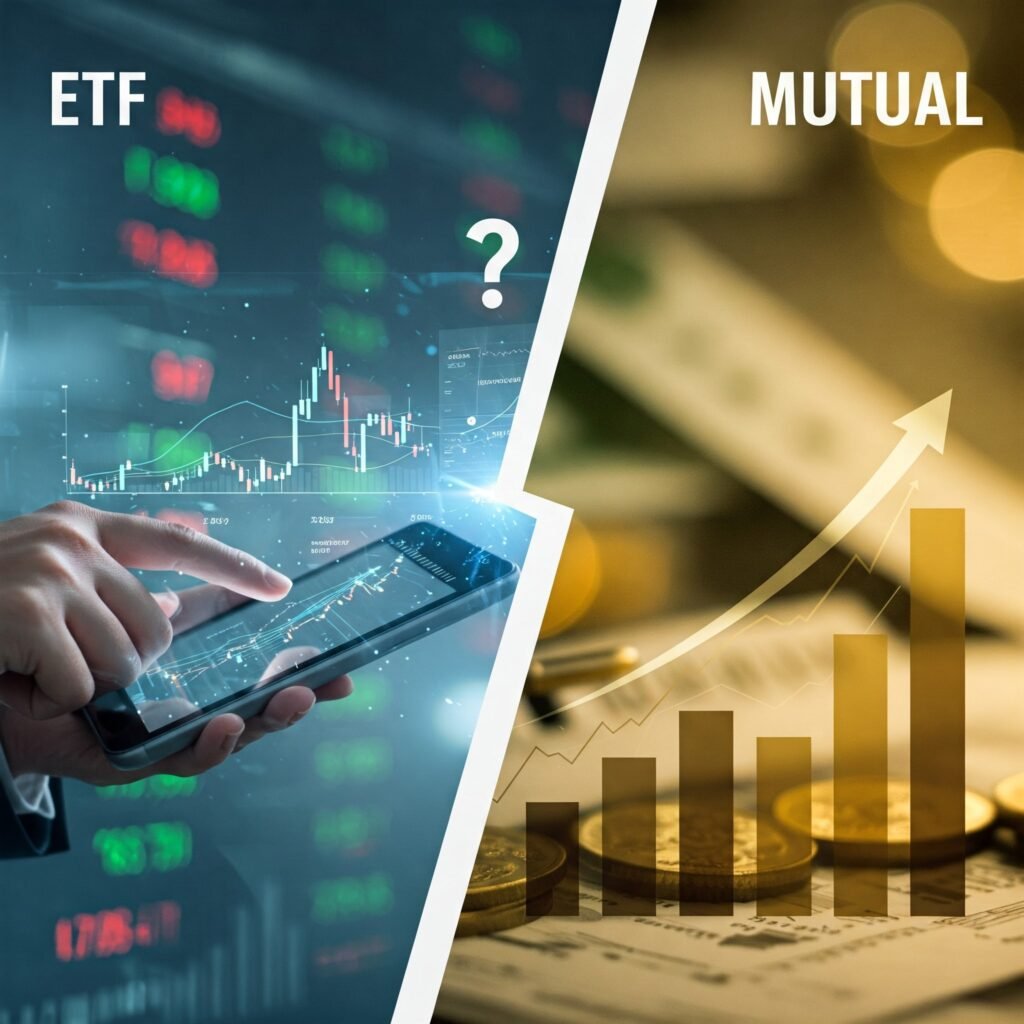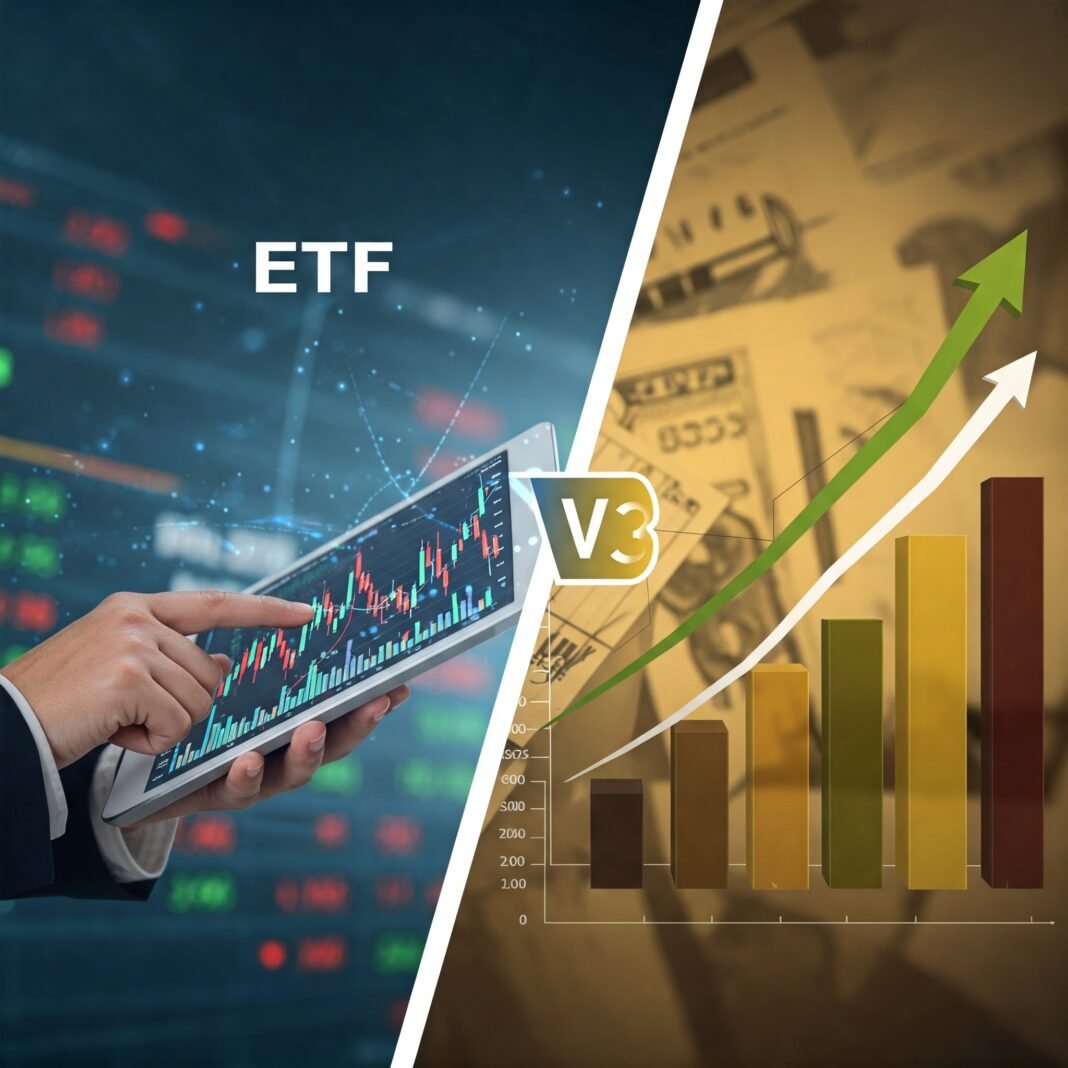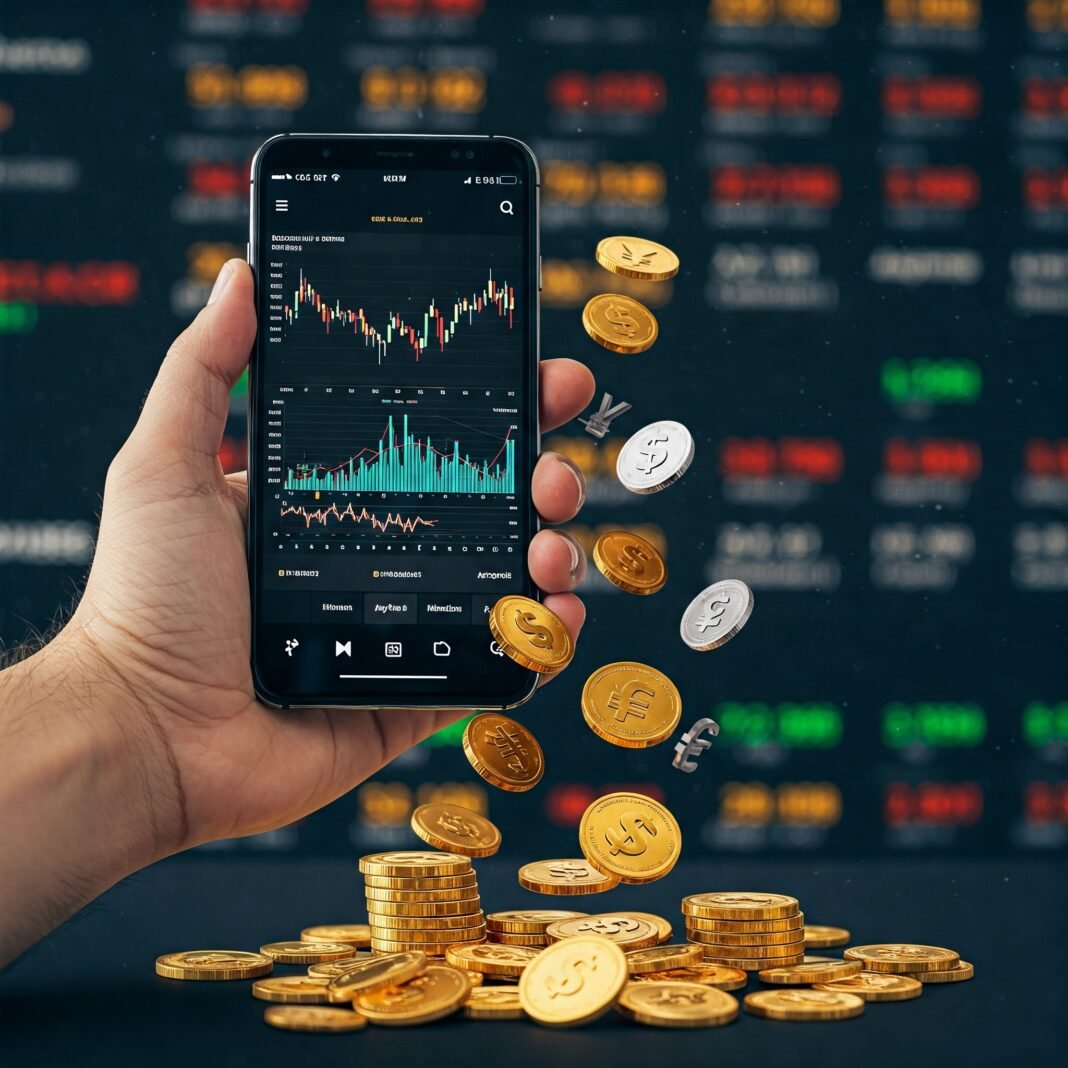Investing your hard-earned money is a crucial step toward building wealth. You’ll likely encounter two popular investment vehicles: Exchange Traded Funds ETF vs Mutual Funds. Both pool money from many investors. They buy a diversified portfolio of stocks, bonds, or other assets. But let’s talk about the bottom line. Which One Makes You More Money? The answer isn’t always simple.
Many investors ask this exact question. Both options offer diversification and professional management. However, their structures, costs, and how they trade can really affect your potential investment returns. In this post, we’ll look closely at the key differences. These differences impact how much money you could potentially make. We’ll compare ETFs versus Mutual Funds. This will help you see which might be better for your financial goals.

ETF vs Mutual Funds: Understanding the Core Difference Affecting Your Money
Before discussing potential profits, let’s quickly define them. What are ETFs and Mutual Funds?
- Mutual Funds: These pool investor money. A fund manager buys and sells assets. They follow the fund’s specific strategy. You typically buy shares directly from the fund company. The price is based on the fund’s value (NAV) at the end of the trading day.
- Exchange Traded Funds (ETFs): They also pool assets, similar to mutual funds. But ETFs trade on stock exchanges. They trade throughout the day. Think of it like buying and selling individual stocks. Their price changes based on supply, demand, and the value of their assets.
This difference in how they trade seems small. However, it creates ripple effects. These effects, plus other structural differences, influence which one could potentially make you more money long term.
Key Factors Affecting Investment Returns in ETF vs Mutual Funds
Several things greatly influence an investment’s performance. These factors often work differently for ETFs and Mutual Funds. Understanding them helps explain why there’s no single “winner” for making more money overall.
Fees and Expenses: The Hidden Cost on Your Returns
Costs are a major factor. They directly impact your net returns. Every investment has costs. These costs reduce your profits.
- Mutual Fund Fees: These can include an “expense ratio.” This is an annual fee calculated as a percentage. It covers management, administration, and operations. Some mutual funds also charge sales loads. These are commissions paid when you buy or sell shares. Examples include “front-end,” “back-end,” or “level” loads. High expense ratios or sales loads can cut deeply into your total returns.
- ETF Fees: ETFs usually have lower expense ratios. This is true compared to actively managed mutual funds. They trade like stocks, so you might pay brokerage commissions. This happens when you buy or sell shares. However, many brokers now offer commission-free ETF trading.
Impact on Money: Lower fees mean you keep more of your investment returns. A small fee difference compounds significantly over many years. This leaves you with much more money in the end.

Management Style: Active vs. Passive Returns
The fund manager’s strategy greatly impacts potential returns.
- Mutual Funds: Many use active management. A manager or team decides what to buy, hold, and sell. Their goal is to beat a benchmark index. The S&P 500 is one example. This active approach needs lots of research and trading. That adds to higher expense ratios. The potential to outperform exists, but doing it consistently is hard. Many actively managed funds don’t beat their benchmark after costs.
- ETFs: A large number of ETFs are passively managed. They usually track a specific market index. Examples include an S&P 500 ETF or a broad bond market ETF. The aim is to match the index’s performance. They do this with a low expense ratio. Passive management involves less active decision-making. This leads to much lower fees. Some ETFs are actively managed, but they are less common than passive ones.
Impact on Money: Passive funds (often ETFs) offer market returns. They do this at a low cost. Active funds (often Mutual Funds) could potentially offer returns above the market. But this comes with higher fees. There is no guarantee of success. Historically, passive investing often results in higher net returns. This is compared to the average actively managed fund. You must factor in costs.
[Image Placeholder: Image representing two paths – one straight and labeled “Index” or “Passive,” the other winding and labeled “Active” or “Manager Decision.”]
Tax Efficiency: Keeping More of Your Money
Investment gain taxes also reduce your take-home money.
- Mutual Funds: Actively managed funds often trade securities often. This can create capital gains. These gains are then given to shareholders. You might owe taxes on these distributions. This happens even if you haven’t sold your shares. This method is less tax-efficient.
- ETFs: ETFs are structured differently. How shares are created and redeemed affects taxes. ETFs generally distribute fewer capital gains than mutual funds. This makes them more tax-efficient. So, you potentially keep more of your after-tax investment money. [Outbound Link: Link to a reputable source explaining ETF tax efficiency, like Investopedia or SEC.gov]
Impact on Money: Greater tax efficiency means you pay less in taxes each year. This allows more of your investment earnings to grow over time. Ultimately, this leaves you with more money.
Other Factors Influencing Potential Returns
- Diversification: Both offer diversification. But the type matters. An ETF tracking a wide index provides broad diversification. A mutual fund focused on one sector offers less. Good diversification helps manage risk. This protects your current money. It also allows for smoother growth.
- Trading Flexibility: You can trade ETFs all day. This allows strategies like limit orders. You can buy or sell quickly. Mutual Funds trade only once daily based on their NAV. Trading frequency doesn’t guarantee higher long-term returns. But flexibility might suit certain trading strategies. (Remember, long-term buy-and-hold is often best for maximum returns).
So, Which One Makes You More Money?
Here is the key truth: Neither ETF vs Mutual Funds are guaranteed to make more money than the other.
Your potential to make money depends on several things. It depends on the specific investments in the fund. It depends on the fund’s strategy and market performance. Crucially, it depends on the fees and taxes you pay.
- Consider a low-cost S&P 500 ETF. Now consider a low-cost S&P 500 Index Mutual Fund. If they track the exact same index with similar low costs, their pre-tax returns will likely be very similar.
- An actively managed mutual fund could potentially do better than a passive ETF. But its higher fees might mean your net return is actually lower.
- A very specific or niche ETF might have higher potential gains (and risks) than a broadly diversified mutual fund. The reverse could also be true.
Generally, over many years, lower costs are the most predictable factor for achieving higher net investment returns. ETFs usually have lower expense ratios. They are also often more tax-efficient than actively managed mutual funds. Because of this, they often help investors keep more of the money their investments earn. However, low-cost index mutual funds also exist. They can be just as effective. [Outbound Link: Link to a comparison of average ETF vs. Mutual Fund fees from a reliable financial news source or research firm.]

Making Your Choice: Actionable Takeaways for More Money
Don’t fixate on the label – ETF vs Mutual Funds. Instead, look at the fund’s characteristics.
- Look at the Fees: Focus on low expense ratios. Compare the costs of similar ETFs and Mutual Funds. Watch out for sales loads on mutual funds.
- Understand the Management Style: Are you paying for active management, hoping to beat the market? Or do you prefer tracking the market cheaply with passive investing?
- Consider Tax Efficiency: This is key, especially in taxable accounts. Tax-efficient investments can leave you with more money after taxes.
- Match to Your Goals: Does the fund’s investment plan fit your financial goals? Does it match your comfort level with risk?
- Compare Specific Funds: Don’t compare all ETFs to all Mutual Funds. Compare a specific ETF (like VOO, tracking the S&P 500) to a specific Mutual Fund with a similar aim (like FXAIX, tracking the S&P 500).
In the end, the investment that makes you more money will be the right fit. It will match your strategy. It will offer broad diversification relevant to your goals. Most importantly, it will keep the costs that reduce your returns to a minimum over time.
Choosing between an ETF vs Mutual Fund isn’t about finding a guaranteed winner. It’s about picking the structure and strategy that best supports your long-term success. It’s about helping you keep more of the money your investments generate.





